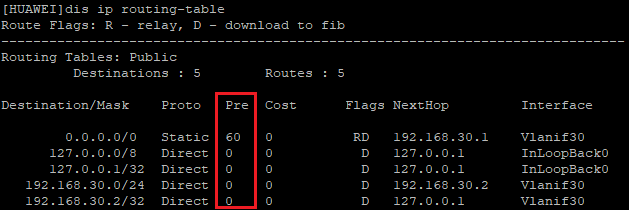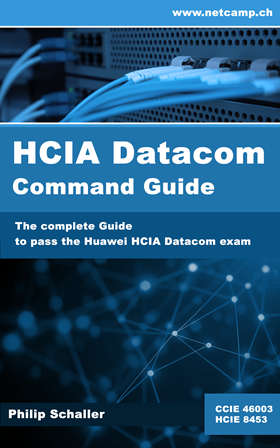Each route is assigned a value that represents the trustworthiness depending on the protocol. Huawei and Cisco define this trustworthiness differently, which is why this can have an influence on the routing table. This article shows the differences between the Route Preference (Huawei) and the Administrative Distance (Cisco) for the different routing protocols.
The route preference/administrative distance (AD) is visible per route in the routing table and can be displayed using display ip routing-table (Huawei) or show ip route (Cisco) commands. The following output shows the example on a Huawei device (column Pre):

Unfortunately, Huawei and Cisco define trustworthiness of the routing protocols differently, which can lead to different behavior with regard to the routing table. The following table shows the comparison between Huawei and Cisco:

In particular, the fact that Huawei classifies the routes of OSPF and IS-IS as more trustworthy than a static route is special (lower number means more trustworthy). If you also want to set the route preference to 1 for a static route on the Huawei device, similar to Cisco, then this can be done as follows for each route:
[HUAWEI] ip route-static 0.0.0.0 0.0.0.0 192.168.30.1 preference 1
With many static routes, however, this can be very cumbersome and even lead to errors. Therefore, there is a command with which you can also set the route preference for all static routes to 1 by default:
[HUAWEI] ip route-static default-preference 1
With this configuration, you have the same behavior as with Cisco for all newly configured static routes. It is also possible to adjust the route preference for the dynamic routing protocols.


